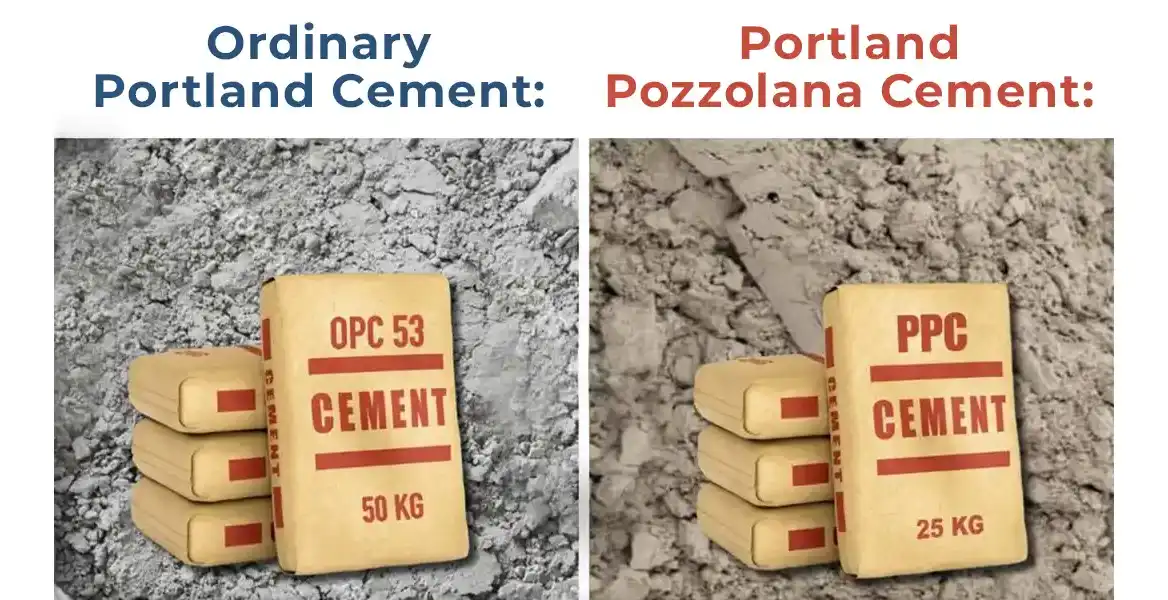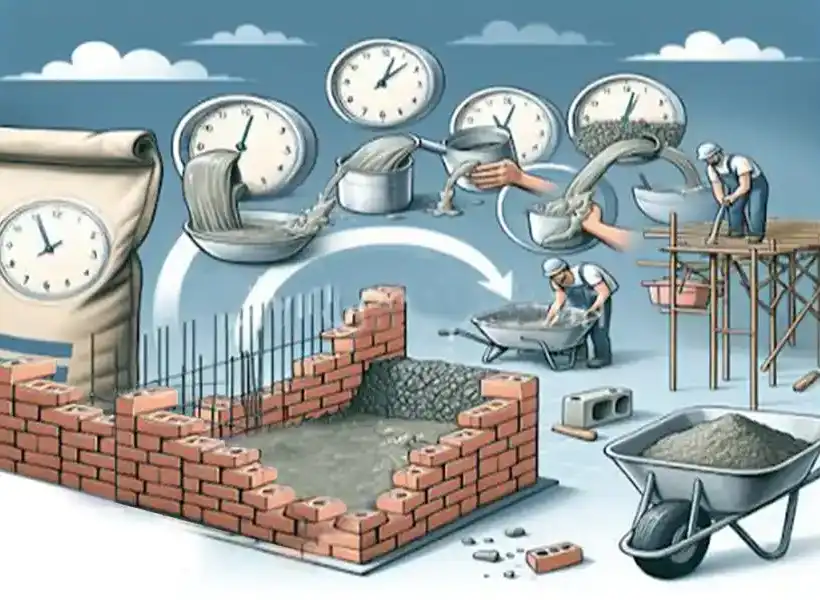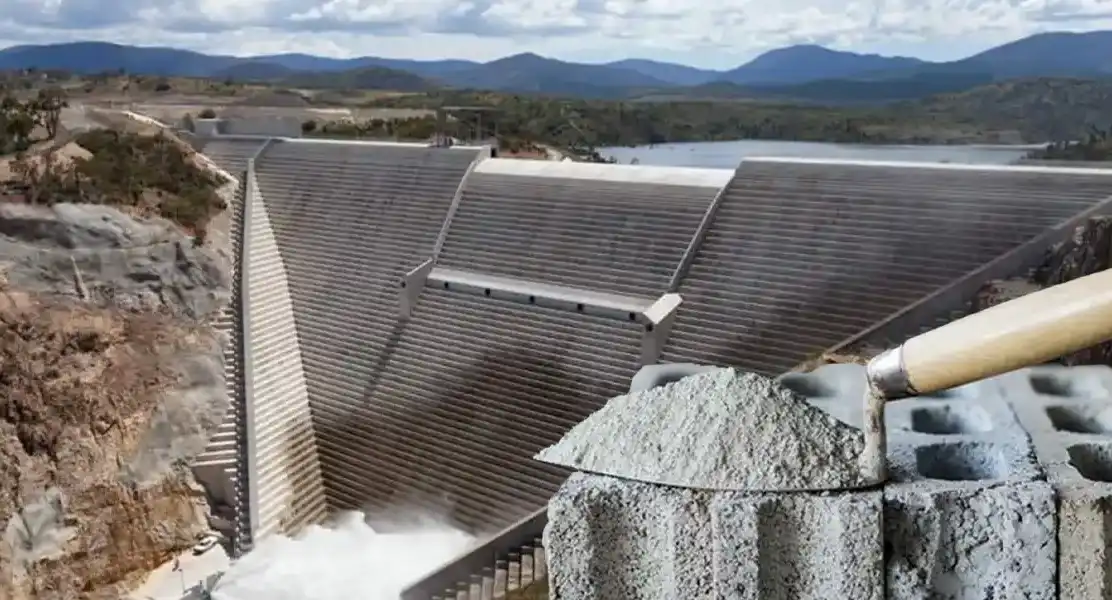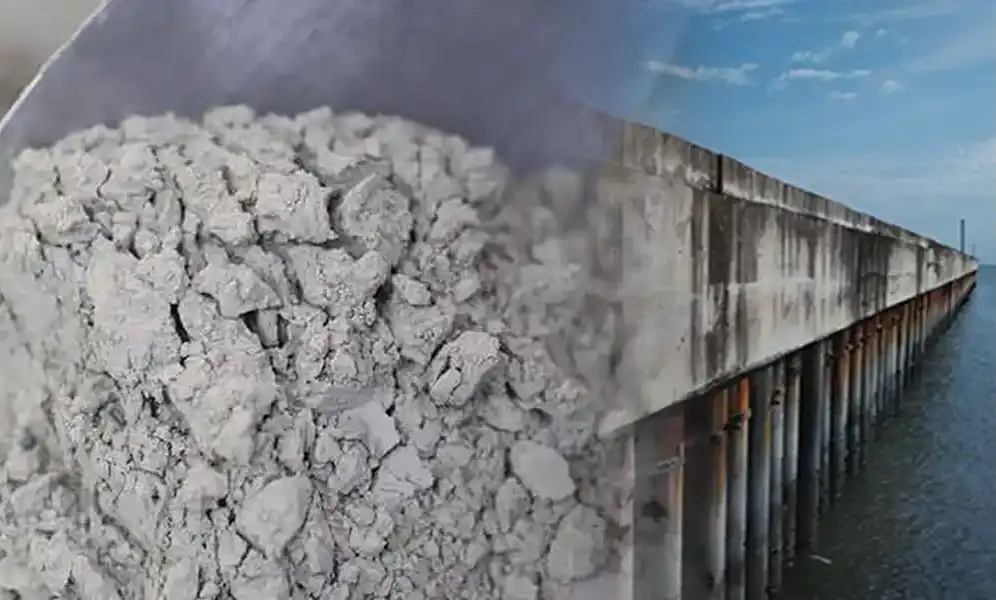
In India, different types of cement are used for construction; this write-up will give you detailed information on different types of cement. It also covers the various uses and applications of each and every type of cement and provides complete insights into the different grades of cement in the Indian market.
What Is Cement Made Up Of?

Cement comprises four major components, each contributing to its qualities and performance. Clinker is a raw material generated by heating a mixture of raw materials, mostly limestone, clay, and other minor additions, at very high temperatures in a cement kiln.
Table of Contents:
Types of Cement in India:
- Ordinary Portland Cement
- Portland Pozzolana Cement
- Rapid-Hardening Cement
- Quick-Setting Cement
- Low-Heat Cement
- Suplhate-Resisting Cement
- White Cement
- Colored Cement
Different Grades of Cement:
- 33-Grade Cement
- 43-Grade Cement
- 53-Grade Cement
Types of Cement in India:
Ordinary Portland Cement:

Ordinary Portland cement is the most widely and commonly used cement in construction. Portland cement is a versatile cement that can be used in a variety of applications, from construction to precast concrete products. Ordinary Portland cement, also known as OPC, is widely known for its durability, strength, and workability, which makes it suitable for different construction applications.
Portland Pozzolana Cement:
Portland pozzolana cement, also known as PPC, is a type of cement made by blending Portland cement with pozzolanic materials like volcanic ash, burnt clay, etc. These materials improve the workability and durability of the cement, making it suitable for different construction applications. PPC is commonly used in home construction and mass concrete buildings like dams, bridges, thick walls, etc.
Rapid Hardening Cement:

RHC is a type of hydraulic cement specially made to gain strength quickly. Rapid-hardening is used in conditions where fast-setting concrete is required, like road pavements, and it is also used in manufacturing precast slabs, posts, electric poles, etc. Rapid-hardening cement is expensive compared to other cements. RHC costs from Rs 200 per bag to Rs 450 per bag.
Quick Setting Cement:

Quick-setting cement is a hydraulic cement designed to set and harden quickly. Quick-setting cement is used to repair water pipes, sewers, and tunnels; the average price of quick-setting cement ranges from 375 to 390 INR.
Low Heat Cement:

Low-heat cement is a type of hydraulic cement specially made to produce less heat during hydration. Low-heat cement is manufactured by adjusting the mineral constituent, grinding fineness, and blending materials of ordinary PC. Low-heat cement is used in mass concrete structures like damn construction, marine engineering, wind turbine plinth construction, etc. The price of low-heat cement starts from 190
Suplhate Resisting Cement:

Sulfate-resisting cement is a type of hydraulic cement made to resist the damaging effects of sulfate salts in groundwater and soil. Sulfate-resisting cement is used in Tunnels, sewage pipelines, bridges, etc. The price of SRC Cement starts at RS 340 per 50-kg bag.
White Cement:

White cement is used primarily for decorative purposes, such as in constructing architectural elements like precast concrete and terrazzo flooring. White cement prices range from Rs 585/bag to Rs 630/bag.
Colored Cement:

Colored cement, or pigmented cement, is a type of hydraulic cement mixed with pigments to get a wide range of colors. The price of colored cement starts at Rs. 150 and goes up to Rs. 500.
Different Grades of Cement:

The most commonly used grades of cement are 33, 43, and 53-grade cement. These grades refer to the strength of the concrete after 28 days of curing.
33 Grade Cement:
33-grade cement is commonly used for general construction work and plastering purposes. It has a strength of 33N/mm’2 after 28 days of curing. 33-grade cement is used for construction purposes.
43 Grade Cement:
43-grade cement is the most used grade of cement in India. 43-grade cement has a compressive strength of 43 N/mm2 after 28 days of curing. It's suitable for construction purposes, such as plain concrete or plastering, where moderate to high strength is required, like plastering. It is suitable for concrete mixes up to M30.
53-Grade Cement:
53-grade cement is the highest-grade cement in India. It has a compressive strength of 53 N/mm2 after 28 days of curing. This kind of cement is used in damns and high-rise buildings. 53-grade cement is suitable for concrete mixes above M25.
Remember, higher grades of cement. have higher hydration, which can result in the cracking of concrete if not properly managed.
Portland cement is the most commonly used cement in India. Portland cement is used in India because of its versatility and ability to form durable and strong concrete.